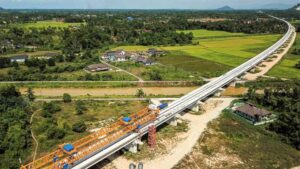The Rise and Fall of Persepolis

Before the construction of Persepolis, the Achaemenid Empire experienced a period of notable prosperity and territorial expansion under the reigns of Cyrus the Great (559–530 BCE) and Cambyses II (530–522 BCE). When Darius I ascended to the throne in 522 BCE, the empire already boasted established royal capitals at Susa and Ecbatana, the latter housing a summer palace. Unlike these existing sites, Persepolis was conceived not as a replacement but as a grand ceremonial and ritualistic center for the empire.
The Rise and Fall of Persepolis: An Architectural Legacy of the Achaemenid Empire
Construction of Persepolis commenced in 515 BCE and continued for nearly two centuries. The site was nearing completion when Alexander the Great invaded and destroyed the ceremonial city in 330 BCE. Today, Persepolis lies in ruins; however, modern archaeologists have managed to reconstruct detailed renderings of its former grandeur.
Similar to the Tall-i Takht Citadel of Cyrus the Great, Persepolis was built on an expansive terrace measuring 450 by 300 meters, elevated above the surrounding plains and situated adjacent to a mountain. There are indications that Cyrus may have influenced the initial design of Persepolis, though it was Darius and his successors who realized these plans. Rather than providing an exhaustive chronological account of the construction phases, this summary highlights the prominent ruins that remain visible today. For a visual guide to these locations, please refer to the aerial view provided at the end of this article.
Double Stairway Entrance
The primary access to the terrace is via a double stairway. Spanning seven meters in width, the stairway was designed to accommodate both horsemen and infantry, allowing them to ascend in parallel lines before converging at the top. The symmetry of the staircases reflects the Achaemenian fascination with balanced, mirrored forms, a theme evident in other architectural features such as the addorsed bull column capitals.
Gate of All Nations
Constructed by Xerxes I, this imposing square gate greeted visitors arriving from the staircase. The entrance was flanked by colossal bulls and guarded by winged bulls with human heads. The gate led west to the Apadana yard and east to a major road. Originally, the entrances were covered by double-leaf wooden doors, which have long since vanished.
Apadana of Xerxes
The Apadana, located on the western side of the terrace, was initiated by Darius and completed by Xerxes I approximately 30 years later. This square-shaped palace, each side measuring sixty meters, was constructed from sun-dried bricks adorned with decorative tiles. Its interior featured a grid of seventy-two columns, some of which are still standing today. The columns were adorned with sculptures of addorsed bulls or other figures. Initially, the columns provided support for an intricately adorned ceiling constructed from oak and cedar beams that were brought in from Lebanon. However, this ceiling is no longer in existence. The Apadana included stone staircases adorned with reliefs depicting the Persian elite guard, commonly referred to as the “Immortals,” on its northern and eastern sides.
The design of the Apadana is believed to have influenced later Persian architecture, including the Safavid dynasty’s palaces. The front portico of the Chehel Sotoun in Isfahan, known as the talar, notably reflects the design principles of the Apadana.
Hall of One Hundred Columns
Known as the Throne Hall, this structure is the second largest at Persepolis, with each side measuring seventy meters. Originally intended as a reception hall for military leaders and representatives from subject territories, it later served as an imperial museum. The hall was accessible through eight stone doorways adorned with depictions of the king on his throne or engaged in combat with monsters.
Palace of Darius (The Tachara)
The Tachara, the first palace constructed on the terrace, was completed before Darius’s death. Facing south, this building was used for Nowruz (Persian New Year) celebrations until other structures were completed. The Tachara’s design set a precedent for future palace architecture in the empire.
Tomb of Artaxerxes
The tombs of Artaxerxes II (404–359 BCE) and Artaxerxes III (359–338 BCE) are situated east of the terrace on a hill overlooking Persepolis. These tombs were among the last major constructions at Persepolis, as the site was destroyed by Alexander the Great shortly after the completion of Artaxerxes III’s tomb. Earlier Achaemenid rulers were interred at Naqsh-e Rustam, located to the north of Persepolis.
Though Persepolis now exists in ruins, its architectural and historical significance endures, providing a window into the grandeur of the Achaemenid Empire.


